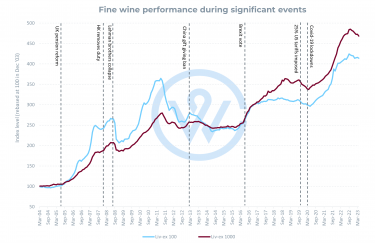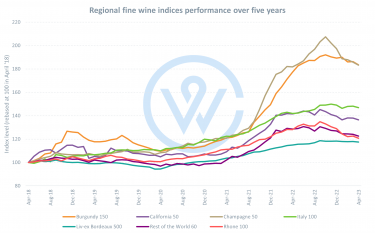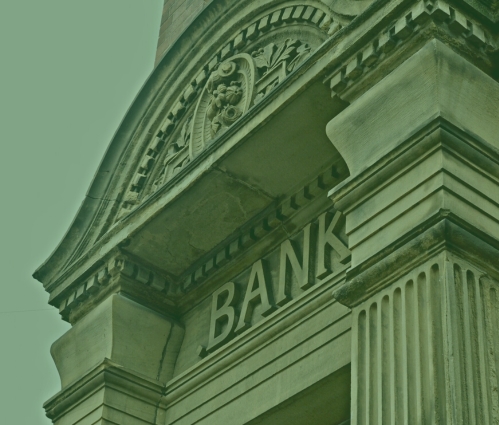- The US banking crisis has been the biggest since the 2008 financial crisis and has created uncertainty in mainstream markets.
- Revisiting key moments in the history of fine wine investment offers valuable insight into the future of the market.
- A key difference between fine wine and equities during the last financial crisis was the speed of recovery.
- The fine wine market is braced for challenges due to its diversity as the performance of different wines and vintages can balance a portfolio.
The recent banking failures have been the biggest since the 2008 financial crisis. Since the beginning of March, regulators have shut down three mid-size US banks – Silicon Valley Bank, Signature Bank and First Republic. In Europe, Swiss giant Credit Suisse was rescued in an emergency deal with rival UBS, which purchased it at a fraction of its closing market value. UBS itself suffered losses during the acquisition – it slid 13% before making a recovery.
While the news echoes the last financial crisis, governments have been providing reassurance that this is not history repeating itself. The current turmoil is partly down to the sharp increase in interest rates, which was aimed to curb inflation.
Still, the banking collapse has had an immediate effect on investor confidence and mainstream markets. European bank shares remain volatile, while US stock markets opened flat this week. Alternative assets and safe havens such as gold and treasuries have enjoyed a boost, as investors have been considering low-risk assets to put their money.
Reflecting on how the fine wine market has performed during previous challenging macroeconomic events could offer valuable insights into what to expect in the current uncertain environment.
The fine wine market during the 2008 financial crisis
Like other markets, fine wine experiences cycles.

During the previous financial crisis, the fine wine market suffered a downturn, but it fared better than some other traditional investments such as equities and real estate. Between June 2008 and June 2009, the Liv-ex 100 index, which was heavily weighted towards wines from Bordeaux, fell 18.8%. Meanwhile, the broader Liv-ex 1000 index, which includes greater number of wines from other regions, dipped 7.4%.
The Knight Frank Luxury Investment Index, which tracks the performance of luxury assets including fine wine, recorded similar figures, with the value of investment-grade wine declining 15% in 2008. By comparison, the S&P 500, a benchmark index of US equities, fell over 37% the same year.
A key difference between fine wine and equities during the financial crisis was the speed of recovery. While the stock market took several years to recover to its pre-crisis levels, the fine wine market turned bullish relatively quickly. By the end of 2009, investment-grade wine had returned to its pre-crisis levels, and by 2010, it had surpassed its previous peak.
Moreover, the performance of fine wine during the financial crisis varied between different regions and vintages. While the Bordeaux market was hit particularly hard, Burgundy and the Rhône performed relatively well.
The fine wine market – braced for challenges
The fine wine market of today looks very different from the shape it had fifteen years ago. There are more investable wines than at any other point in history. If Bordeaux accounted for 90% of the market in 2008, today its share sits at 35%, due to the emergence and the proven investment potential of wines outside this dominant French region.
The diversity of this portfolio diversifier has helped it get through swiftly through other more recent challenges, such as Donald Trump’s 25% tariffs on most European wines, and the Covid-19 pandemic.
For instance, Italy and Champagne, which were exempt from the US tariffs, enjoyed steady price appreciation in 2019, while Burgundy suffered. Throughout and after the pandemic, Burgundy and Champagne turned into the top-performing regions.
California also enjoyed rising prices in 2021, and its index hit an all-time high in September last year.
Bordeaux has been moving quietly and steadily, and its relatively mild performance over the last five years has turned it into a region that can offer value for money, especially in ‘off’ vintages.

Factors influencing the performance of fine wine
The fine wine market is different from other markets and operates with its own dynamics, such as rarity and exclusivity. Its unique characteristics make it less vulnerable to market shocks and economic downturns than financial markets.
Indeed, its historic performance has shown very low correlation to mainstream markets. As a tangible good that cannot be traded as quickly as stocks, fine wine is generally insulated from rapid price changes.
In general, prices move based on supply and demand, critics’ scores, vintage quality, age and brand appeal. Find out more about fine wine investment here, or explore the performance of individual brands on Wine Track.
WineCap’s market analysis showcases the value of portfolio diversification and the stability offered by investing in wine. Speak to one of our wine investment experts and start building your portfolio. Schedule your free consultation today.
